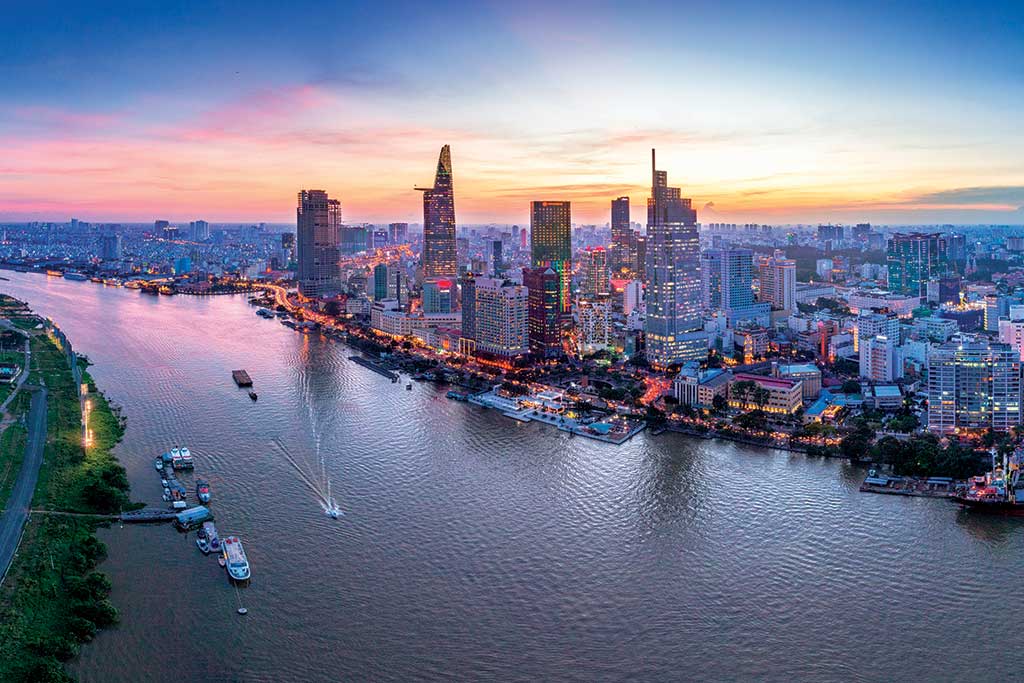Ho Chi Minh City has the country’s biggest LGBT population. Vietnam has never had any anti-gay laws, and is relaxed and tolerant of gay and lesbian visitors
For a generation of Americans, Vietnam is synonymous with the brutal war that raged here just a few decades ago. The first wave of US combat troops arrived in Vietnam in 1965, and remained until the signing of the Paris Peace Accords in 1973 that brought America’s military involvement in the war to an end. The war itself continued until 30 April 1975, when the People’s Army of Vietnam and the Vietcong liberated the southern Vietnamese capital, Saigon.
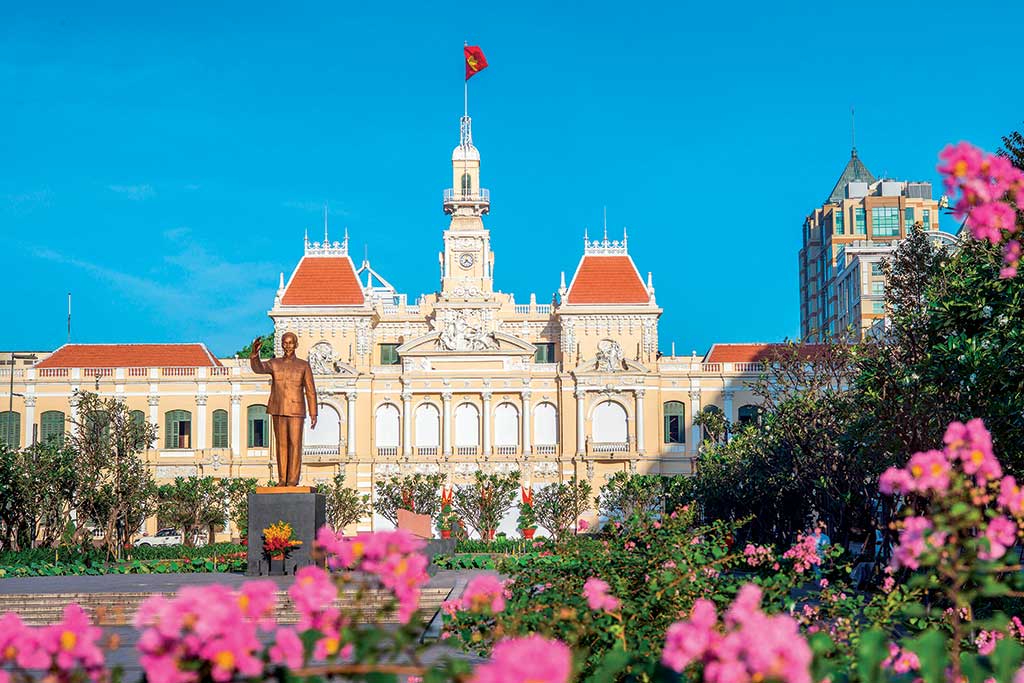
Ho Chi Minh City People’s Committee Building
Veterans who returned played a role in improving ties between the two countries. Their presence also helped Vietnam to develop as a tourist destination, and today Vietnam boasts all the accoutrements that international travelers demand. Although veterans have reliably returned for decades, this generation is aging, but fortunately for Vietnam’s ongoing tourism economy, a whole new generation has begun to appreciate the country’s diverse offerings: including charming old cities like Hanoi and Hoi An, pristine beaches, and the vibrant and colorful metropolis formerly known as Saigon.
Saigon became Ho Chi Minh City (abbreviated HCMC) in 1976 in honor of North Vietnam’s first leader, the communist revolutionary Ho Chi Minh. Although the city’s top-ranking sites relate to the Vietnam War, there’s now a much broader range of cultural attractions competing for the top spots on Tripadvisor, including boat cruises, foodie tours, and spa experiences.
HCMC also has the country’s biggest LGBT population. Vietnam has never had any anti-gay laws, and is relaxed and tolerant of gay and lesbian visitors. The former US Ambassador to Vietnam, appointed by Barack Obama, Ted Osius is openly gay and has been here with his husband Clayton Bond and two adopted babies since 2014. Having retired from diplomacy, he is currently the Vice President of Fulbright University Vietnam, the country’s first independent, private, not-for-profit university.
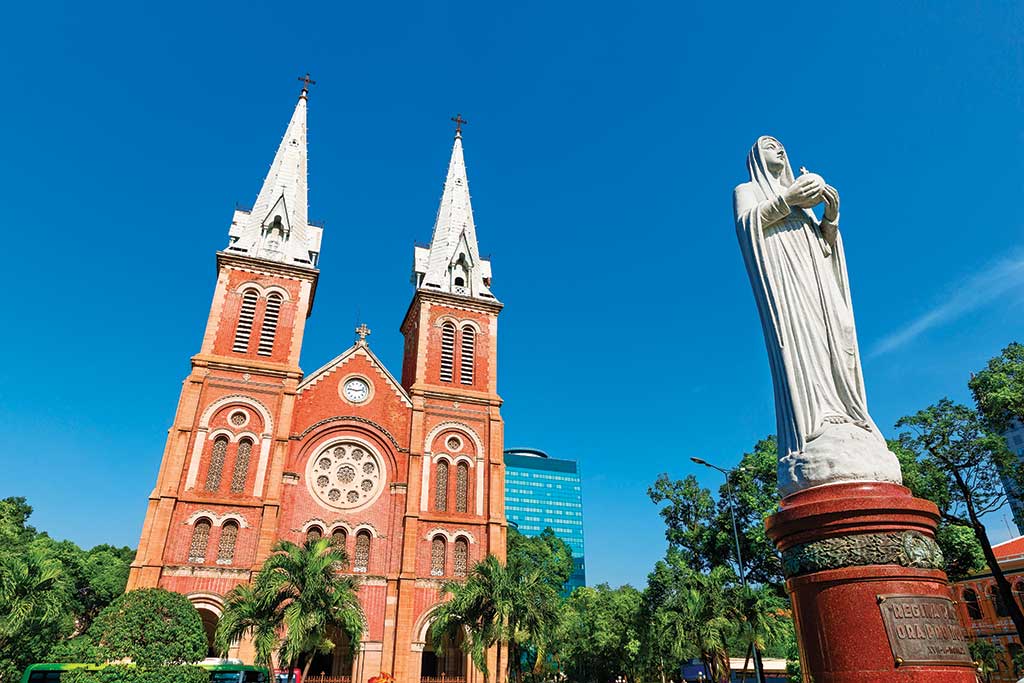

Saigon Notre-Dame Cathedral
In spite of this, the prevailing attitude remains conservative, so the LGBT community prefers to be cautious and discreet. The gay scene is small for a city of this magnitude: a couple of gay-frequented bars, a small gay-run hotel, and a handful of gay spas. There is, however, a whole parallel world of chatting and cruising online and via gay apps such as Grindr and Blued.
Upon first impression, Ho Chi Minh City feels chaotic and confusing: its streets choked with scooters and minibuses, its pavements lined with hawker stalls selling anything from street food to souvenirs, and its skyline in flux due to the ongoing construction of new office blocks, hotels, and apartment buildings. Once you begin to understand the city and its layout, then you’ll see beyond such distractions and discover that its skeleton is a grid of elegant Parisian-style boulevards flanked by magnificent French-colonial buildings. Vietnam was part of French Indochina from the mid-19th century, and one legacy of French colonialism is HCMC’s fine period architecture.
The backbone is Nguyen Hue. The city’s first pedestrian-only street, this broad promenade lined with trees and fountains was created in 2015 as part of a multi-million-dollar redevelopment. At one end of this lively walking street is the ornate 19th-century Hôtel de Ville (or City Hall), renamed the People’s Committee Building in 1975. Other French-colonial landmarks on and around Nguyen Hue include the magnificent Opera House and grand-old Hotel Majestic and Rex Hotel—the latter built in 1927, was originally an autodealership showcasing the finest European cars including Citroën, but after extensive renovation works it reopened in 1961 as a luxury hotel. Along with the nearby Caravelle Hotel, the Rex was an iconic hangout for American officers and war correspondents in the 1960s and 1970s.
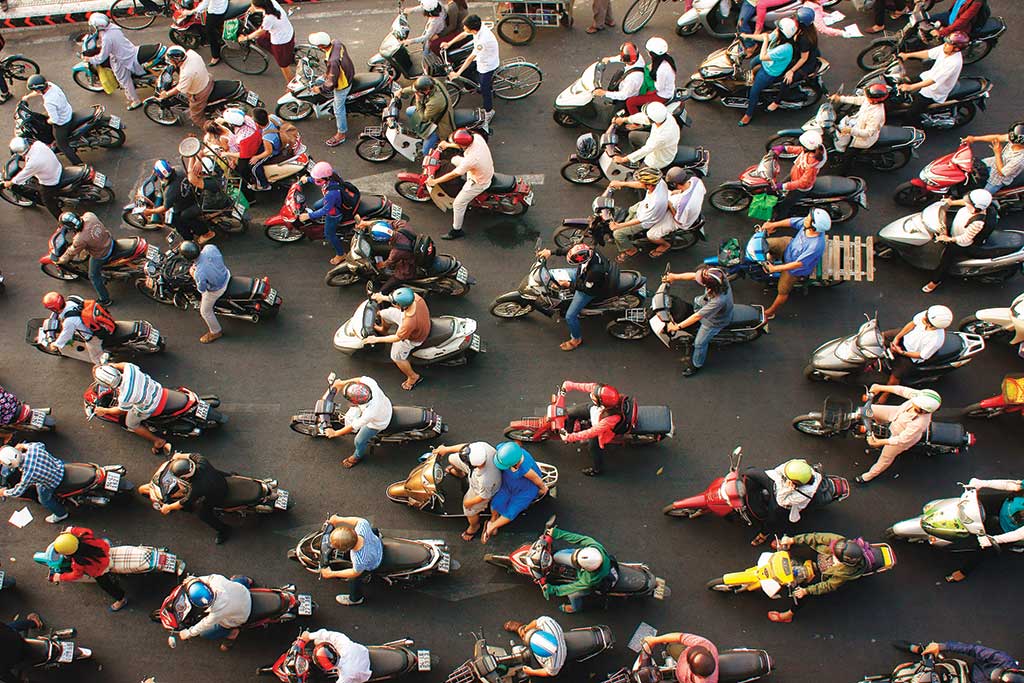

Rush Hour
Nguyen Hue isn’t all about French heritage. There is also a towering statue of Ho Chi Minh here, perhaps as a reminder of who came to power once the French were dislodged. But equally, there’s plenty of evidence of France’s eternal influence, because Nguyen Hue is also flanked by new flagship boutiques of French luxury brands including Chanel, Hermès, and Louis Vuitton.
Along nearby streets such as Lê Loi and Pasteur are many chic cafés, further evidence of French influence. Suggestions include L’Usine, a hip lifestyle store and eatery where you can enjoy delicious Vietnamese coffee (served hot or iced, mixed with thick and syrupy condensed milk) plus salads, sandwiches, all-day breakfasts, and other European café classics. Tucked away in a courtyard in an historic building that was once an opium factory, The Refinery is a Parisian-style bistro that’s recommended for lunch, dinner, or weekend brunch. Should you prefer craft beer, check out the taproom of Pasteur Street Brewing Co, a local microbrewery that produces award-winning beers by combining American craft brewing techniques with fresh and exotic Vietnamese ingredients.
A few minutes north of here is Saigon Notre-Dame Cathedral. Dating from 1863, it was built entirely of materials imported from France, including distinct rosy-red stone from Toulouse used for the cathedral’s exterior (the exact same stone that earned Toulouse the nickname La Ville Rose or the Pink City). Its neighbor, the grand Saigon Central Post Office, is often erroneously credited to Gustave Eiffel, but in fact was designed by another renowned French architect, Marie-Alfred Foulhoux in 1886, a time when Monsieur Eiffel was busy at his works in Paris engineering the interior structure of the Statue of Liberty.
Head to Ben Thanh Market and immerse yourself in bustling Vietnamese life. The stalls of this historic indoor market are piled high with everyday essentials like fresh fruits, spices, household items, and clothes, plus souvenirs and handicrafts. A small but lively night market operates alongside the market after dark.
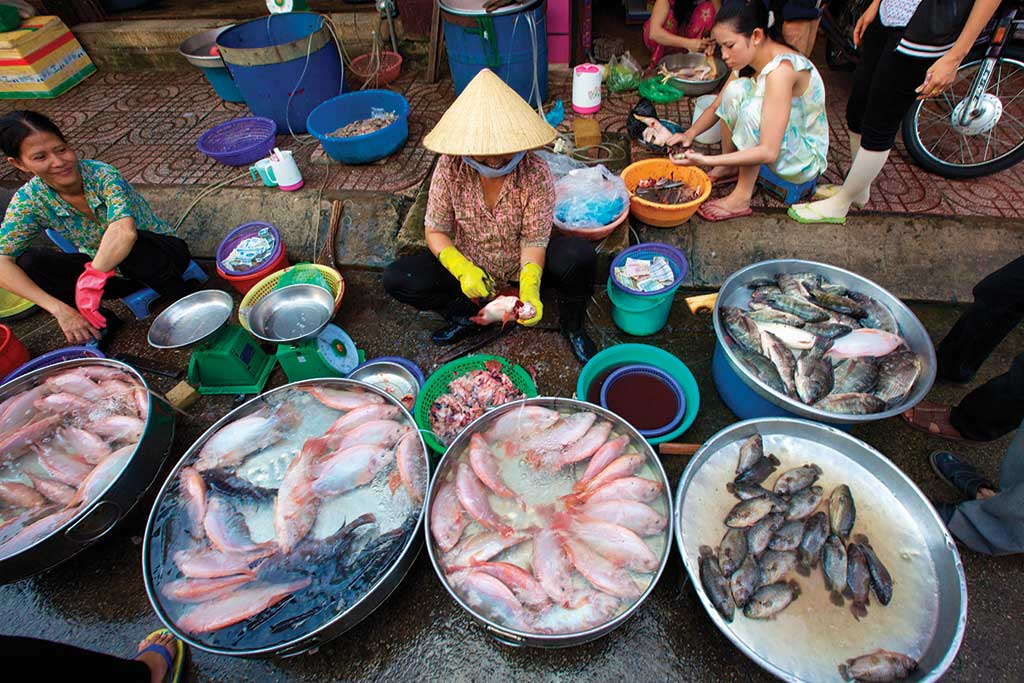

Fish Vendor
The nearby Ben Thanh Street Food Market is perfect for sampling a variety of Vietnamese street food under one massive warehouse-style roof. Decorated with graffiti art and with a rustic makeshift vibe, it primarily caters for tourists but also attracts hip young locals. Dozens of vendors freshly prepare popular Vietnamese dishes such as pho noodle soup and fresh Vietnamese spring rolls full of prawns, crunchy raw vegetables, and aromatic herbs. A few vendors focus on international food, so there’s something here for every taste.
A nearby place to skillfully fuse Western and Asian flavors is Pizza 4P’s Ben Thanh Market. With exposed brick walls and industrial-style décor, this large pizzeria serves Italian classics as well as pizzas with exotic Asian toppings such as salmon sashimi, ginger pork, four flowers, and calamari and seaweed. When first establishing the business, its Japanese founder worried that mozzarella cheese imported from Italy wouldn’t be fresh enough, so he learned to make it himself by studying YouTube videos. He then established a cheese studio in the mountains of Vietnam, using farm-fresh milk from its own herd of cows. As well as house-made mozzarella, Pizza 4P’s now produce a range of cheese here including burrata, ricotta, and scamorza, all of which can be enjoyed at several branches of Pizza 4P’s across HCMC, as well as new branches in Hanoi and Da Nang.


